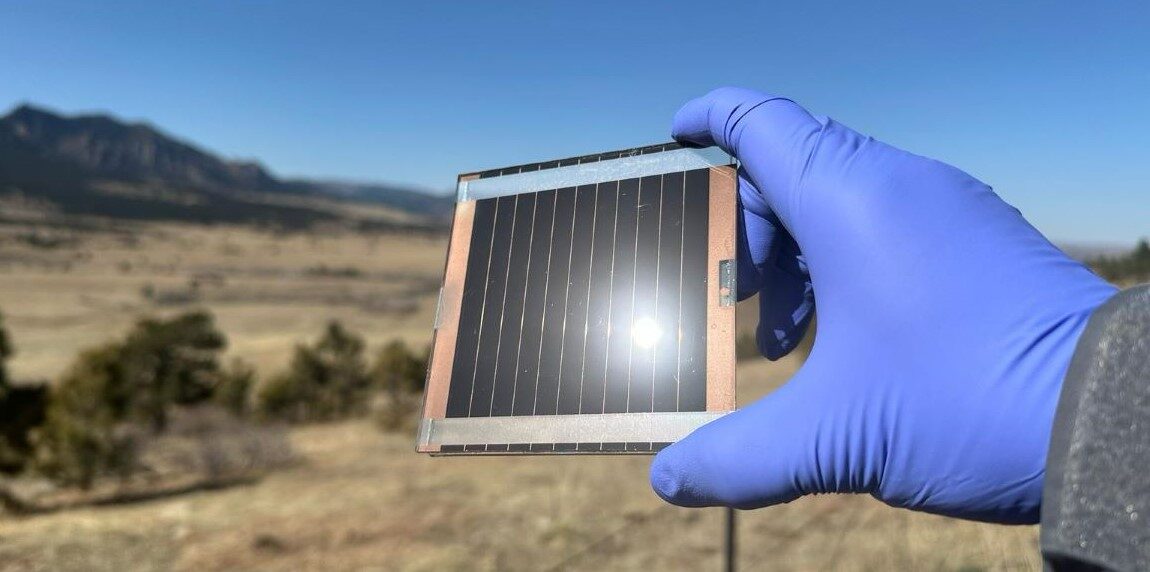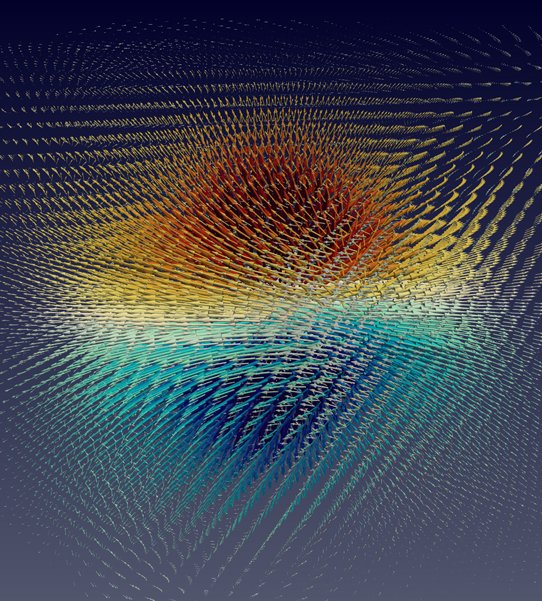Skyrmion-like polaron with large hole in the halide double perovskite Cs2AgBiBr6
Image: J. Lafuente-Bartolome
Researchers at the University of Texas at Austin have investigated the formation of polarons research into the properties of halide perovskites.
Halide perovskites are used in applications such as solar photovoltaics due to their optoelectric properties. In the research paper “Topological polarons in halide pervoskites,” published in the Proceedings of the National Academy of Sciencesscientists used supercomputers Lonestar6 and Frontera from the Texas Advanced Computing Center (TACC) to analyze these properties at the individual atom level.
The team developed EPW, an open-source Fortran message passing interface code that computes properties related to electron-phonon interaction. The EPW code specializes in studying how electrons interact with vibrations in the lattice of a solid, causing the formation of polarons.
“We discovered that electrons form localized, narrow wave packets, known as polarons,” Feliciano Giustino, one of the paper’s lead authors, told TACC. “These ‘clumps of charge’ – the quasiparticle polarons – give perovskites special properties.”
“These polarons show very intriguing patterns. The atoms rotate around the electron, forming vortices never seen before. We suspect that this strange vortex structure prevents the electron from returning to the unexcited energy level,” Giustino explains. “This vortex is a protected topological structure in the halide-perovskite lattice material that stays in place for a long time and allows the electrons to flow without losing energy.”
In the research paper, the scientists add that polarons take many different shapes in halide perovskites, including small polarons, large polarons and charge density waves.
“We find that these emerging quasiparticles support topologically non-trivial phonon fields with quantized topological charge, making them a non-magnetic analog of the spiral Bloch points found in magnetic skyrmion lattices,” the researchers said. “Our findings suggest that halide perovskites can be regarded as a class of quantum materials where electron-phonon couplings replace the traditional electron-electron interactions of correlated electron systems.”
This content is copyrighted and may not be reused. If you would like to collaborate with us and reuse some of our content, please contact: editors@pv-magazine.com.
Popular content



